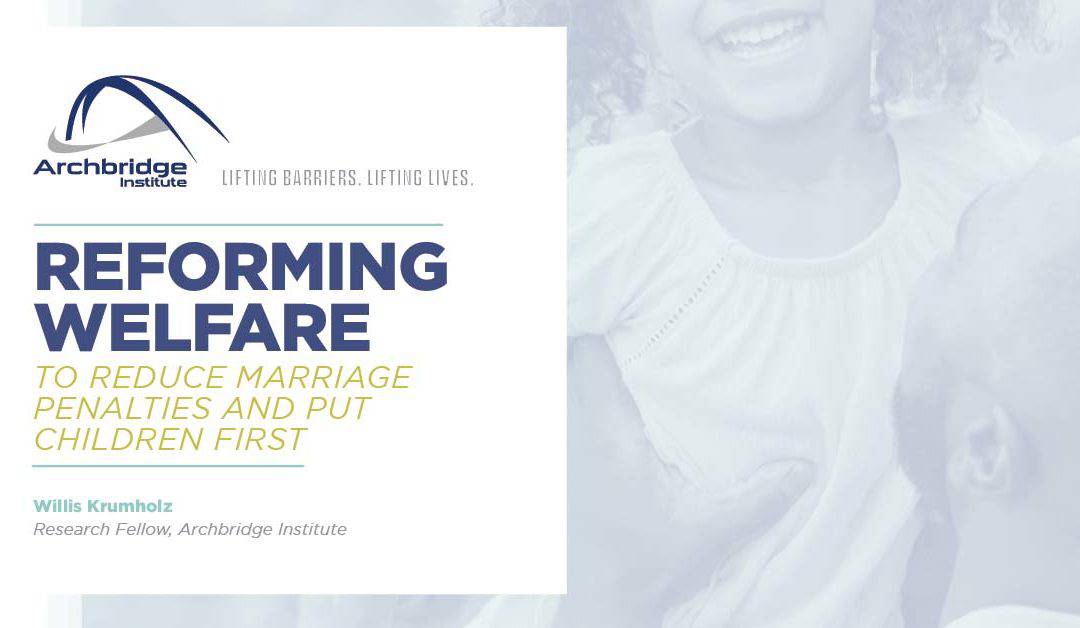Click here to open the PDF in a new tab.
Key Findings
If we are concerned about poverty, inequality, and social mobility, we should be concerned about the collapse of marriage and widespread father-absence–particularly among America’s poor and working-class.
Modern welfare programs often contain explicit penalties against both biological parents living with their children and implicit penalties against marriage. These explicit and implicit penalties are known to welfare recipients and evidence suggests that these incentives meaningfully shape behavior.
The best way to reduce marriage penalties in welfare programs is to follow the example of the tax code: increase the program-eligibility threshold of family income for married couples, which takes account of the fact that two working-class adults will earn more than one adult. In addition, start counting the income of live-in and unrelated adults toward program eligibility so as to stop explicitly penalizing two biological parents both living with their children (whether married or unmarried).
One welfare program in particular—childcare assistance—stands out as having the largest marriage penalties for participants. It is also limited in many states and is inherently pro-work, making it the perfect candidate for reform. Reform can be crafted to be minimally invasive and fiscally prudent.
AI-Reforming_Welfare_Marriage_Penalties

